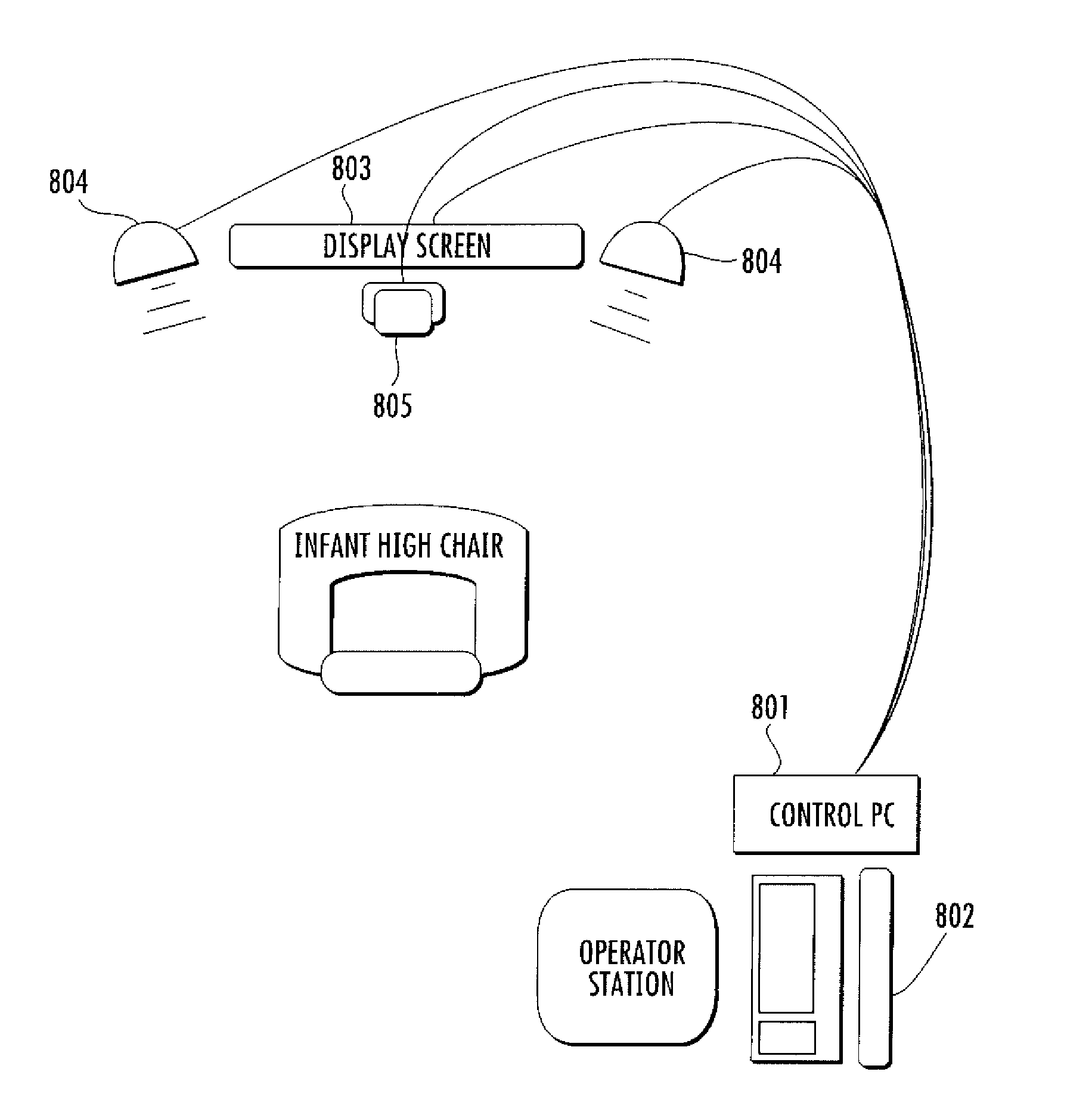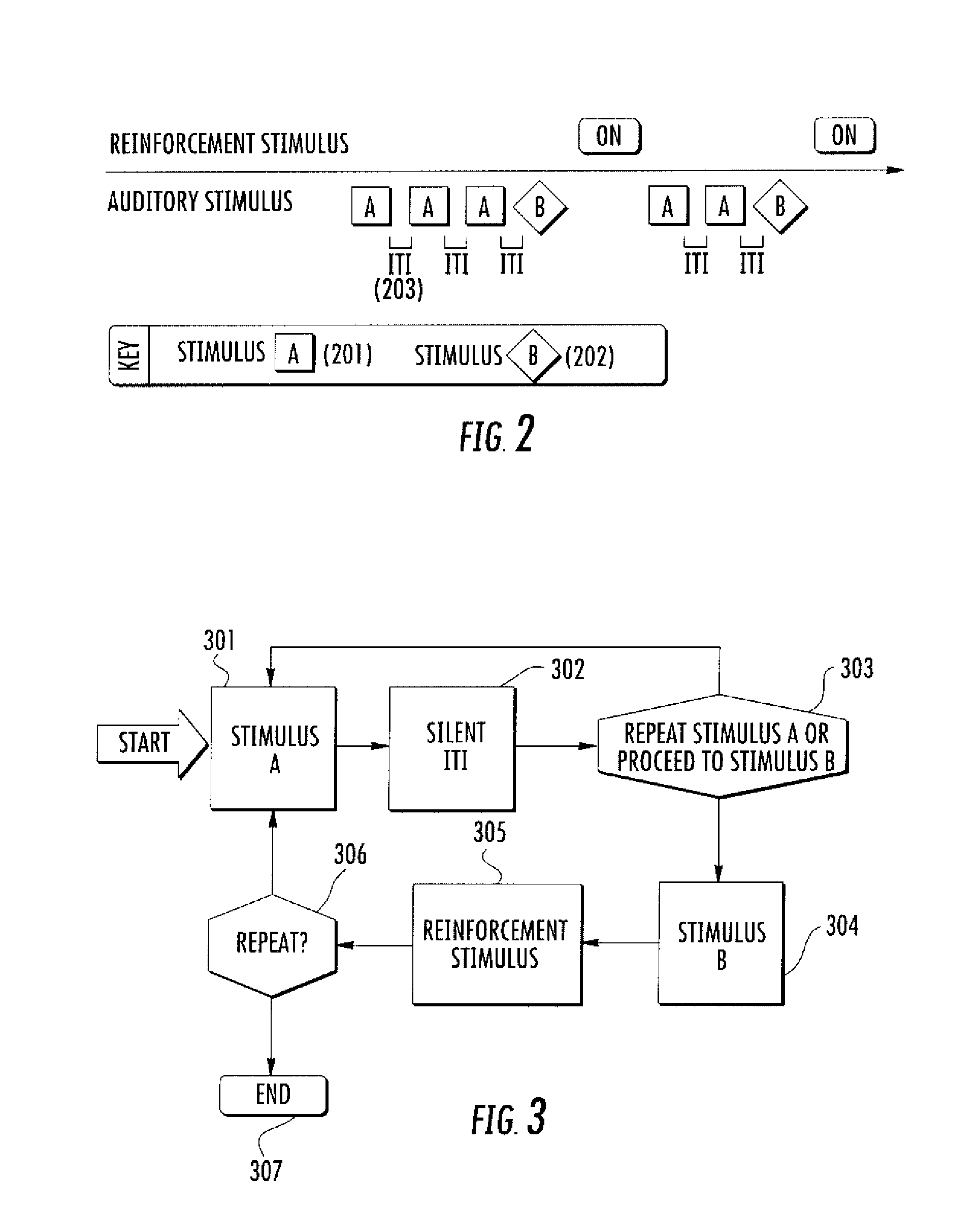Methods and systems for screening and treatment of young infants demonstrating deficits in auditory processing
a technology of auditory processing and screening and treatment, applied in the field of screening and treatment of young infants demonstrating auditory processing deficits, can solve the problems of delay or impairment of language skills, hampered progress in this art, and small pool of language-related technologies for infants
- Summary
- Abstract
- Description
- Claims
- Application Information
AI Technical Summary
Benefits of technology
Problems solved by technology
Method used
Image
Examples
example 1
Passive Exposure to Rapid, Sequential Auditory Signals Modulates Cortical Response Across Time
[0066]Materials and Methods
[0067]Participants: 47 healthy full-term infants without reported hearing, language, or neurological problems divided in 3 groups, as summarized in Table 1.
[0068]
TABLE 1Active BehavioralNPassive ExposureTrainingGroup A5ERP every month from 3-24 monthsAt 6 & 9 m afterTotal: 32,568 standards & 5,750ERPdeviantsGroup B18ERP at 6, 12, & 24 monthsAt 6 & 12 mTotal: 4,248 standards & 7501 hour beforedeviantsERPGroup C24ERP at 6, 9, 12, 16, & 24 monthsAt 6 & 9 m afterTotal: 7,080 standards & 1,250ERPdeviants
[0069]Stimuli for the HT task were selected as follows:
[0070]70 ms complex tones with Fo of 100 or 300 Hz containing 15 harmonics (6-dB roll-off per octave) with either 70, 300, or 500 ms within pair ISI.
[0071]Standard (the stimulus having two the control components)=100-100 Hz.
[0072]Target (the stimulus having the control component and the test component, respectively)...
example 2
Hardware Configuration
[0101]The system consists of the main components illustrated in FIG. 8: a remote eye tracking system with pan-tilt optics and magnetic head tracker from Applied Science Laboratories (Model 504), a designated PC for controlling the eye tracker, and a second PC for controlling the assessment software. The specific interaction sequence for the task is dependent on the infant's behavior, which was determined from point-of-regard coordinates transmitted at 60 Hz over a serial data link from the eye tracker control unit.
[0102]Visual stimuli used in this task were presented on a 24″ wide-aspect LCD monitor located 28″ from the subject's head when seated in an infant high chair. The display area distends approximately 40° of visual angle horizontally and 25° vertically. To reduce the likelihood that subjects were distracted by objects in the testing environment, the ambient lighting is dimmed to a level of approximately 10 lux at the stimulus display screen.
[0103]Durin...
example 3
Task Configuration
[0104]The overall design of the assessment represents a careful balance among several key elements that must be in place before an operant conditioning procedure will be successful. Specifically, these are (1) a conditioned stimulus cue that will be used to signal an upcoming reward, (2) the reward stimulus itself, a display that is reinforcing enough to attract the child's attention and motivate sustained engagement with the task, and (3) an operant response by which the infant indicates anticipation of the reward.
[0105]a. Conditioned Stimulus (Audio)
[0106]Because the goal of this application is to evaluate the infant's ability to process incoming auditory information, a pair of contrastive sounds is used in creating the conditioned stimulus. These two sounds should typically differ on a single acoustic property so that modifying this parameter can result in an array of exemplars that range from very similar to very different. Depending on the specific research qu...
PUM
 Login to View More
Login to View More Abstract
Description
Claims
Application Information
 Login to View More
Login to View More - R&D Engineer
- R&D Manager
- IP Professional
- Industry Leading Data Capabilities
- Powerful AI technology
- Patent DNA Extraction
Browse by: Latest US Patents, China's latest patents, Technical Efficacy Thesaurus, Application Domain, Technology Topic, Popular Technical Reports.
© 2024 PatSnap. All rights reserved.Legal|Privacy policy|Modern Slavery Act Transparency Statement|Sitemap|About US| Contact US: help@patsnap.com










